
Metropolitan Manila, commonly shortened to Metro Manila and formally the National Capital Region, is the capital region and largest metropolitan area of the Philippines. Located on the eastern shore of Manila Bay, the region lies between the Central Luzon and Calabarzon regions. Encompassing an area of 619.57 km2 (239.22 sq mi) and with a population of 13,484,462 as of 2020, it is composed of sixteen highly urbanized cities: the capital city, Manila, Caloocan, Las Piñas, Makati, Malabon, Mandaluyong, Marikina, Muntinlupa, Navotas, Parañaque, Pasay, Pasig, Quezon City, San Juan, Taguig, and Valenzuela, along with one independent municipality, Pateros. As the second most populous and the most densely populated region in the Philippines, it ranks as the 9th most populous metropolitan area in Asia and the 6th most populous urban area in the world.

Manila, officially the City of Manila, is the capital and second-most-populous city of the Philippines. Located on the eastern shore of Manila Bay on the island of Luzon, it is classified as a highly urbanized city. As of 2019, it is the world's most densely populated city proper. It was the first chartered city in the country, and was designated as such by the Philippine Commission Act No. 183 on July 31, 1901. It became autonomous with the passage of Republic Act No. 409, "The Revised Charter of the City of Manila", on June 18, 1949. Manila is considered to be part of the world's original set of global cities because its commercial networks were the first to extend across the Pacific Ocean and connect Asia with the Spanish Americas through the galleon trade; when this was accomplished, it was the first time an uninterrupted chain of trade routes circling the planet had been established.
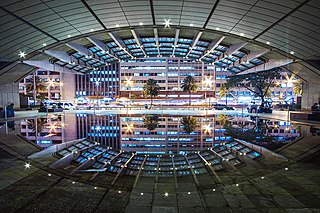
Makati, officially the City of Makati, is a highly urbanized city in the National Capital Region of the Philippines, known for being one of the leading financial center in the country. As of 2013, the city has the highest concentration of multinational and local corporations in the Philippines. Major banks, corporations, department stores as well as foreign embassies are based in Makati. Makati is also known for being a major cultural and entertainment hub in Metro Manila. According to the 2020 census, it had a population of 629,616 people, making it as the 47th most populous city in the country and ranked as the 41st most densely populated city in the world with 19,336 inhabitants per square kilometer or 50,080 inhabitants per square mile. In 2023, ten eastern barangays were removed from Makati's jurisdiction as a result of the Makati–Taguig boundary dispute ruling, resulting in a reduction of the city's population to 292,743. Although its population was just above half a million, the daytime population of the city is estimated to be more than three million during a typical working day because of the large number of people who go to the city to work, shop, and do business.

Dumaguete, officially the City of Dumaguete, is a 2nd class component city and capital of the province of Negros Oriental, Philippines. According to the 2020 census, it has a population of 134,103 people. It is the most populous city and the smallest city by land area in Negros Oriental.
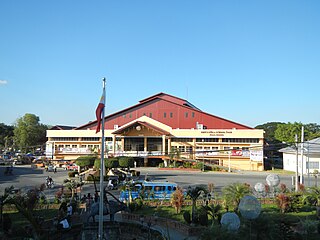
Rosales, officially the Municipality of Rosales, is a 1st class municipality in the province of Pangasinan, Philippines. According to the 2020 census, it has a population of 66,711 people.

SM Mall of Asia, is a large shopping mall in the Philippines, located at Bay City, Pasay, Philippines, within the SM Central Business Park, a reclaimed area within Manila Bay, and the southern end of Epifanio de los Santos Avenue (EDSA).

Saint Scholastica's College, also referred to by its acronym SSC or colloquially St. Scho, is a private Catholic basic and higher education institution for women founded and managed by the Congregation of the Missionary Benedictine Sisters of Tutzing in a 3.66 hectares (36,600 m2) lot in Malate, Manila, Philippines. It was established in 1906 initially offering elementary academic programs. It started admitting high school students in 1907 and opened its collegiate department in 1920. It pioneered in formal music education in the Philippines, opening a Conservatory of Music in 1907.

The Philippine Normal University is a public coeducational teacher education and research university in the Philippines. It was established in 1901 through Act No. 74 of the Philippine Commission "for the education of natives of the Islands in the science of teaching". It has campuses in Manila, North Luzon, South Luzon, Visayas, and Mindanao. Pursuant to Republic Act No. 9647, it is the country's National Center for Teacher Education.

The Rizal Memorial Coliseum is an indoor arena in the Rizal Memorial Sports Complex in Manila, Philippines. It can hold up to 6,100 people.
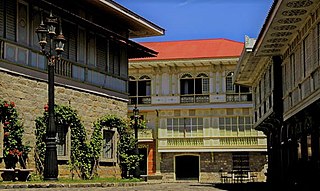
The architecture of the Philippines reflects the historical and cultural traditions in the country. Most prominent historic structures in the archipelago are influenced by Austronesian, American architectures.

The National Museum of the Philippines is an umbrella government organization that oversees a number of national museums in the Philippines including ethnographic, anthropological, archaeological, and visual arts collections. From 1973 until 2021, the National Museum served as the regulatory and enforcement agency of the government of the Philippines in the restoring and safeguarding of significant cultural properties, sites, and reservations throughout the Philippines. The mandate has since been transferred to the National Commission for Culture and the Arts.

Greenbelt is a shopping mall located at Ayala Center, Makati, Metro Manila, Philippines, near Glorietta. It is owned by Ayala Malls, a real-estate subsidiary of Ayala Land, which is an affiliate of Ayala Corporation. It opened in 1988 after merging existing structures and is one of the Ayala Corporation's flagship projects. The mall offers a mix of high-end retail shops, restaurants, amenities, leisure and entertainment. Currently, the mall has five sections: two enclosed areas, two buildings with open-air shopping areas, and Greenbelt 5, which was opened in 2007.

The Manila City Hall is the official seat of government of the City of Manila, located in the historic center of Ermita, Manila. It is where the Mayor of Manila holds office and the chambers of the Manila City Council is located. It was originally intended to be a part of a national government center envisioned by Daniel Burnham in the 1900s. Although the dream plan was not fully implemented, some buildings for the proposed government center were constructed, including the Old Legislative Building, and the Agriculture and Finance Buildings.

Poblacion is an administrative division of southern Metro Manila, the Philippines. It is an urban barangay of Makati, named and centered on the city's historic poblacion area and serves as the second most important commercial center in Makati behind the Makati Central Business District. It is also the city's center of government, culture, history and entertainment and a major business district of Metro Manila.

In Metro Manila, Philippines, tourism is a significant industry. In 2012, the city and the region welcomed 974,379 overnight visitors. Serving as the main gateway to the Philippines' numerous destinations, the city attracts mainly international tourists, with a total of 3,139,756 visitors in 2012. Global Blue ranks Manila as the eleventh 'Best Shopping Destination' in Asia. The city holds the tenth position in MasterCard's global top 20 fastest-growing cities for international visitors from 2009 to 2013.

The Cultural Center of the Philippines Complex, also known as the CCP Complex, is an 88-hectare (220-acre) art district managed by the Cultural Center of the Philippines (CCP) located along Roxas Boulevard in Metro Manila, Philippines. It is a mixed-use cultural and tourism hub overlooking Manila Bay in south-central Manila, most of which fall under the jurisdiction of the city of Pasay.
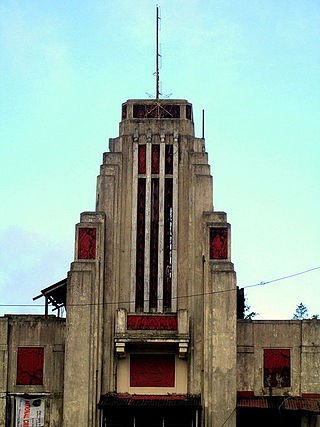
The (Old) Jaro Municipal Hall is a heritage building which previously served as the seat of government of the former city of Jaro in Iloilo province.
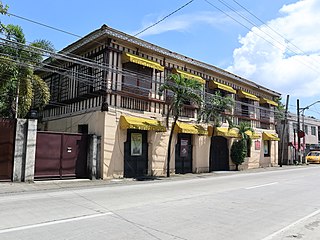
Camiña Balay Nga Bato, formerly known as Avanceña House, is a century-old heritage house in the Arevalo district, Iloilo City, Philippines. It was built in 1865 and was designed by the first parish priest of Molo, Anselmo Avanceña, for Don Fernando Avanceña and his wife, Eulalia Abaja. It was then passed on from one family to another until it came under the Camiñas family.[1] It is now owned by the fourth generation of the original owners, Gerard Camiña, former director of the Land Transportation Office in Western Visayas, and his wife, Luth Camiña. The ancestral house was declared as an Important Cultural Property by the National Museum of the Philippines (NMP) in 2015.

Arroyo Fountain is a historical landmark in Iloilo City, Philippines. It is located in front of Casa Real de Iloilo, or the Old Iloilo Provincial Capitol, in Iloilo City Proper. It was named after Senator José María Arroyo, who authored the law, Republic Act No. 3222, that established the then Iloilo Metropolitan Waterworks in 1925.

The National Museum (NM) Western Visayas Regional Museum, simply known as the National Museum Western Visayas, is a museum in Iloilo City, Philippines.





















